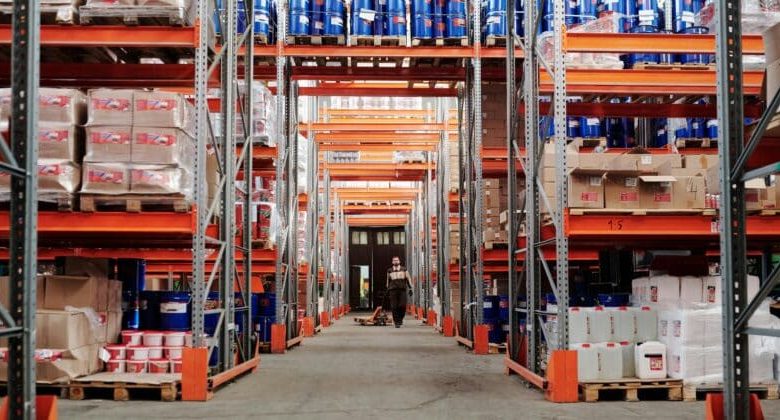Why Preventive Maintenance is Non-Negotiable in Warehousing

Warehousing is one of the most high-risk industries for workplace injuries. A significant number of incidents are caused by equipment failure. The problem is not just about broken machines—it’s about how preventable those failures often are. In many facilities, equipment is run until it stops working, and only then is it repaired. While this might seem like a way to save time or money, it usually leads to higher costs, more downtime, and serious safety risks.
The truth is that preventive maintenance isn’t a luxury or a “nice-to-have.” It is a vital part of creating a safe and efficient warehouse. Without it, managers face more accidents, lower productivity, and higher long-term expenses. This article explains why preventive maintenance is non-negotiable, how it impacts safety, and what benefits businesses can expect when they put it at the center of operations.
Equipment Health Directly Impacts Worker Safety
The connection between machine condition and employee safety is direct and unavoidable. Workers rely on forklifts, conveyors, and lifting equipment to do their jobs. If any part of that equipment fails during use, the person operating it is the first at risk.
For example, a forklift with worn hydraulic hoses may suddenly lose lifting power, putting both the operator and nearby workers in danger. Similarly, electrical faults in charging equipment can lead to sparks or even fires. These are not rare scenarios—they happen in warehouses where preventive care is not prioritized.
That is why managers must not only schedule inspections but also use reliable replacement components. For instance, if you own Raymond forklifts, sourcing dependable parts ensures the equipment continues to operate safely and consistently. Companies like Intella Parts make it easier by offering a wide range of Raymond forklift parts that help businesses maintain high safety standards and reduce the risk of equipment-related accidents. Keeping machines in peak condition is not just about efficiency; it’s about protecting the people who rely on them daily.
Why Waiting for Breakdowns is More Expensive
Some managers choose to delay maintenance, assuming that repairs are only needed once something stops working. At first glance, this approach may appear cost-effective. But in practice, waiting for breakdowns almost always costs more.
When equipment fails without warning, it usually happens at the worst possible time—during peak shifts, large orders, or critical deliveries. Emergency repairs often require specialist technicians, rush shipping for parts, and unplanned overtime for staff. These costs quickly surpass the expense of scheduled servicing. On top of that, the warehouse loses valuable production hours. Preventive maintenance, while requiring consistent investment, saves businesses from these expensive and stressful surprises.
Extending the Lifespan of Essential Equipment
Every warehouse depends on expensive equipment, from forklifts to automated systems. These are not machines businesses can afford to replace frequently. Preventive maintenance helps extend the useful life of this equipment by ensuring it runs smoothly for years instead of burning out early.
Something as simple as replacing filters, lubricating parts, and tightening connections can make a significant difference in performance. Small adjustments done regularly prevent the wear and tear that would otherwise lead to complete breakdowns. Over time, this approach not only saves replacement costs but also ensures equipment performs reliably when it’s needed most.
Staying Compliant and Avoiding Penalties
Warehousing is a regulated industry, and safety compliance is not optional. OSHA and other regulatory bodies require equipment to be inspected and maintained according to set standards. Failure to comply can result in fines, lawsuits, or even temporary shutdowns of operations.
Preventive maintenance helps warehouses stay compliant by keeping equipment within safety standards. Regular checks provide documentation that managers can use to prove compliance during audits or inspections. More importantly, it ensures that workers are protected by machines that meet safety expectations. Non-compliance is not just a financial risk—it’s also a reputational one. Businesses that fail to maintain safe equipment risk losing trust with both employees and customers.
Reducing Downtime and Keeping Operations Smooth
Unplanned downtime is one of the biggest challenges in warehousing. A single broken forklift or conveyor can delay dozens of orders. If equipment fails during a busy shift, workers have no choice but to wait for repairs, which slows the entire supply chain. Studies in manufacturing and logistics show that unplanned downtime can cost companies thousands of dollars per hour in lost productivity.
Preventive maintenance keeps operations steady by identifying problems before they turn into breakdowns. Scheduled servicing ensures that equipment runs reliably, even during peak hours. Warehouses that follow consistent maintenance schedules experience fewer interruptions, which means faster order fulfillment and happier customers. In a competitive industry, the ability to deliver on time can be the difference between keeping and losing a client.
The Financial Case for Preventive Maintenance
The cost of preventive maintenance is often far lower than the cost of waiting for a breakdown. According to Deloitte, companies that adopt predictive maintenance practices can reduce maintenance costs by around 25% and achieve up to 20% higher equipment uptime. That is because preventive maintenance reduces emergency repairs, extends equipment life, and minimizes downtime losses.
Think of it this way: replacing a worn part during a scheduled check may cost a few hundred dollars. If that part fails during use, it could cause thousands in damage, require emergency technician services, and disrupt operations for hours or even days. Over time, the savings from avoiding these situations far outweigh the investment in scheduled maintenance. For warehouse managers looking to cut costs, preventive maintenance is one of the smartest places to start.
Building a Culture of Safety and Accountability
Preventive maintenance is not just a task for technicians—it requires buy-in from the entire team. A strong culture of safety starts with training workers to recognize early warning signs of equipment issues. Operators should feel encouraged to report unusual noises, warning lights, or performance changes without fear of blame.
Regular safety meetings, clear reporting systems, and quick responses to maintenance requests build trust among employees. When workers see that management takes their safety seriously, they are more likely to follow safety procedures themselves. This shared responsibility reduces risks and creates a safer workplace overall. Accountability at every level ensures that maintenance is not overlooked or delayed.
Preventive maintenance is not just a way to protect equipment—it is essential for protecting workers, reducing costs, and keeping operations efficient. Warehouses that delay maintenance face higher risks of accidents, unplanned downtime, and unexpected expenses. On the other hand, facilities that prioritize routine care benefit from safer workplaces, longer equipment life, and stronger compliance with safety standards.
The evidence is clear: the cost of prevention is far lower than the cost of failure. Managers who commit to preventive maintenance set their teams up for success and build trust with customers who depend on reliable service. In a fast-moving industry where safety and efficiency go hand in hand, making preventive maintenance a priority is the smartest business decision a warehouse can make.




